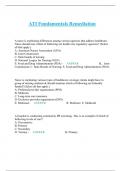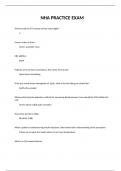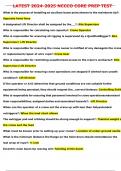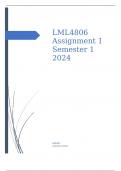Exam (elaborations)
Grade 7 Mathematics Revision Term 1 +2
- Course
- Mathematics
- Institution
- 7th Grade
This document is for grade 7 with questions and answers covering different aspects of grade 7 maths only term 1 and 2. Look at the cover page to know what is covered in the document .Check out the next document for term 3 and 4 . Please leave a review we would love to hear your feedback.
[Show more]










